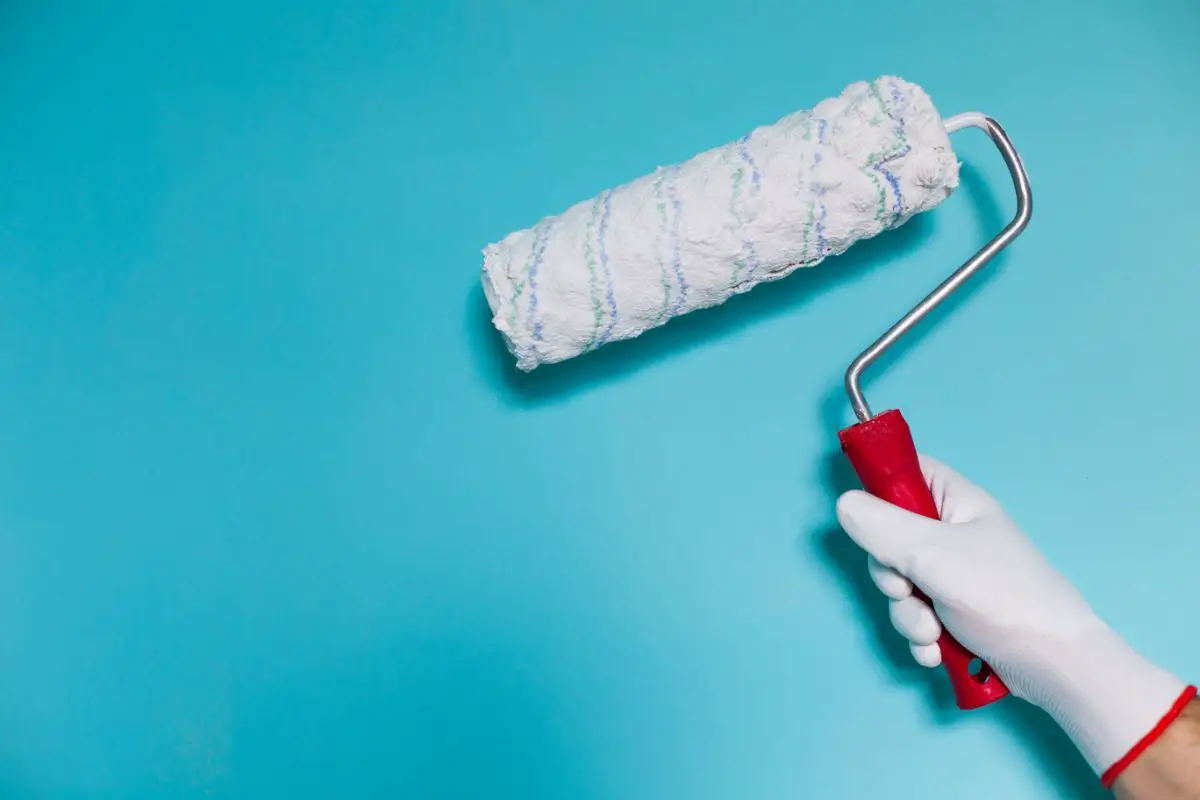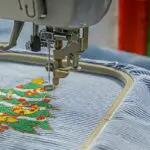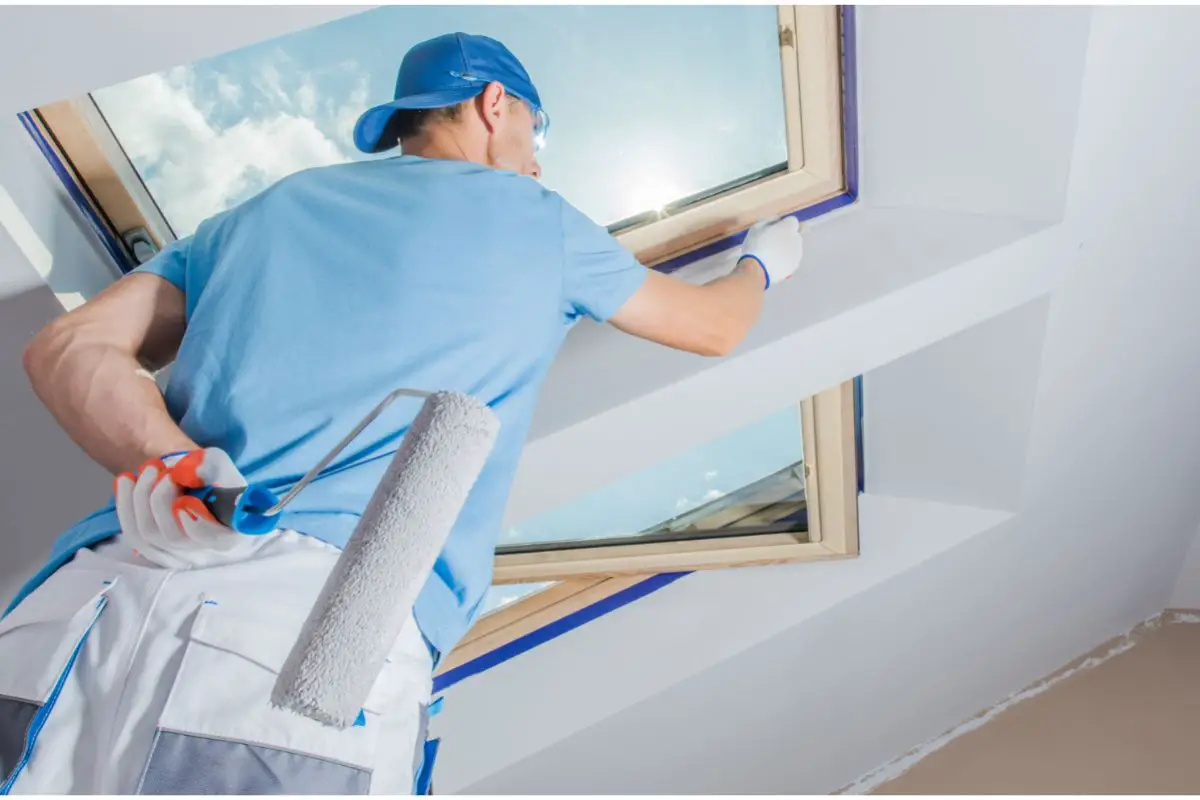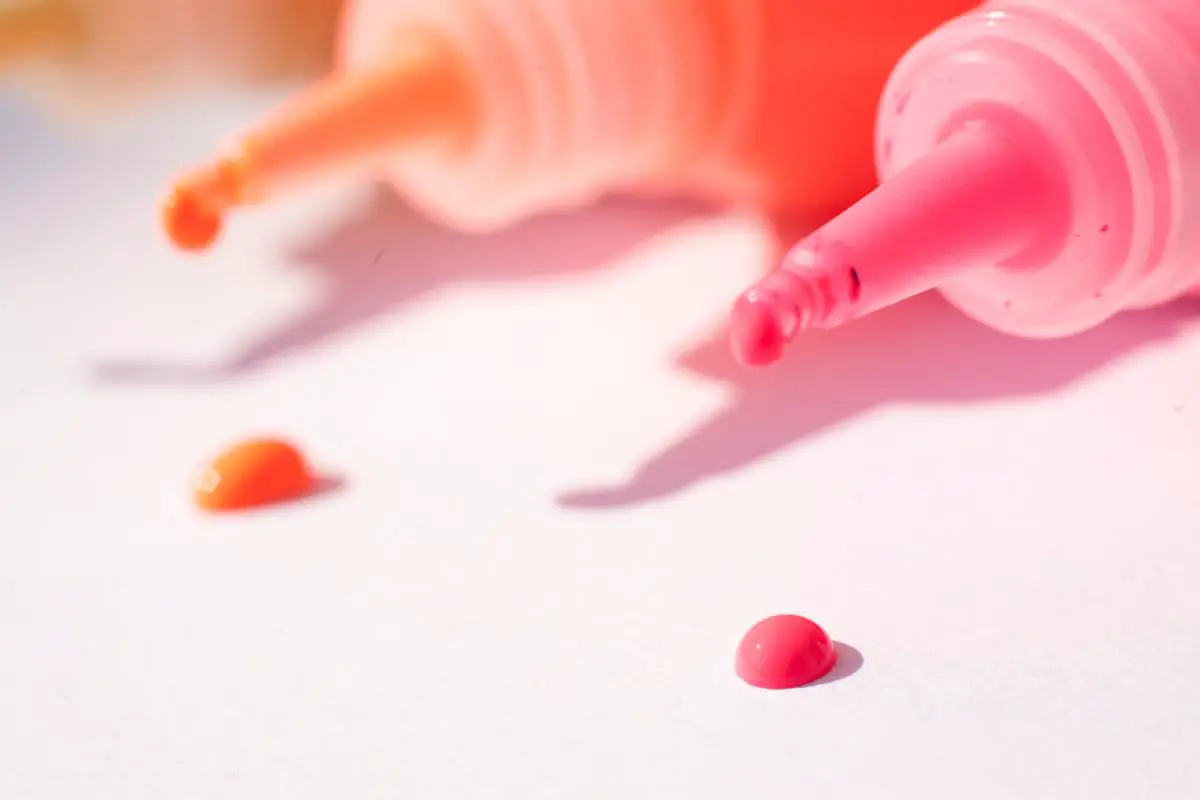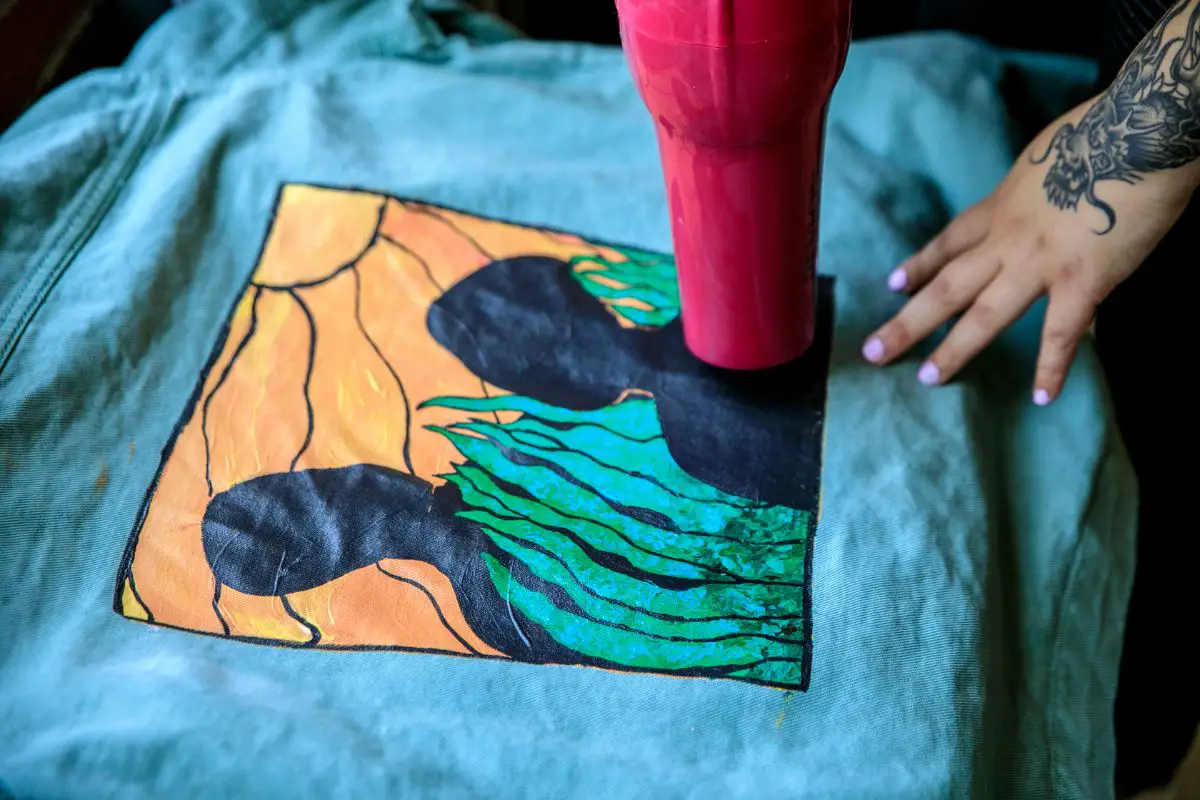There are countless different types of paint out there, each with their own unique characteristics that make them perfect for specific paint jobs.
However, it isn’t just the color of the paint that you need to think about, but things like its sheen and luster.
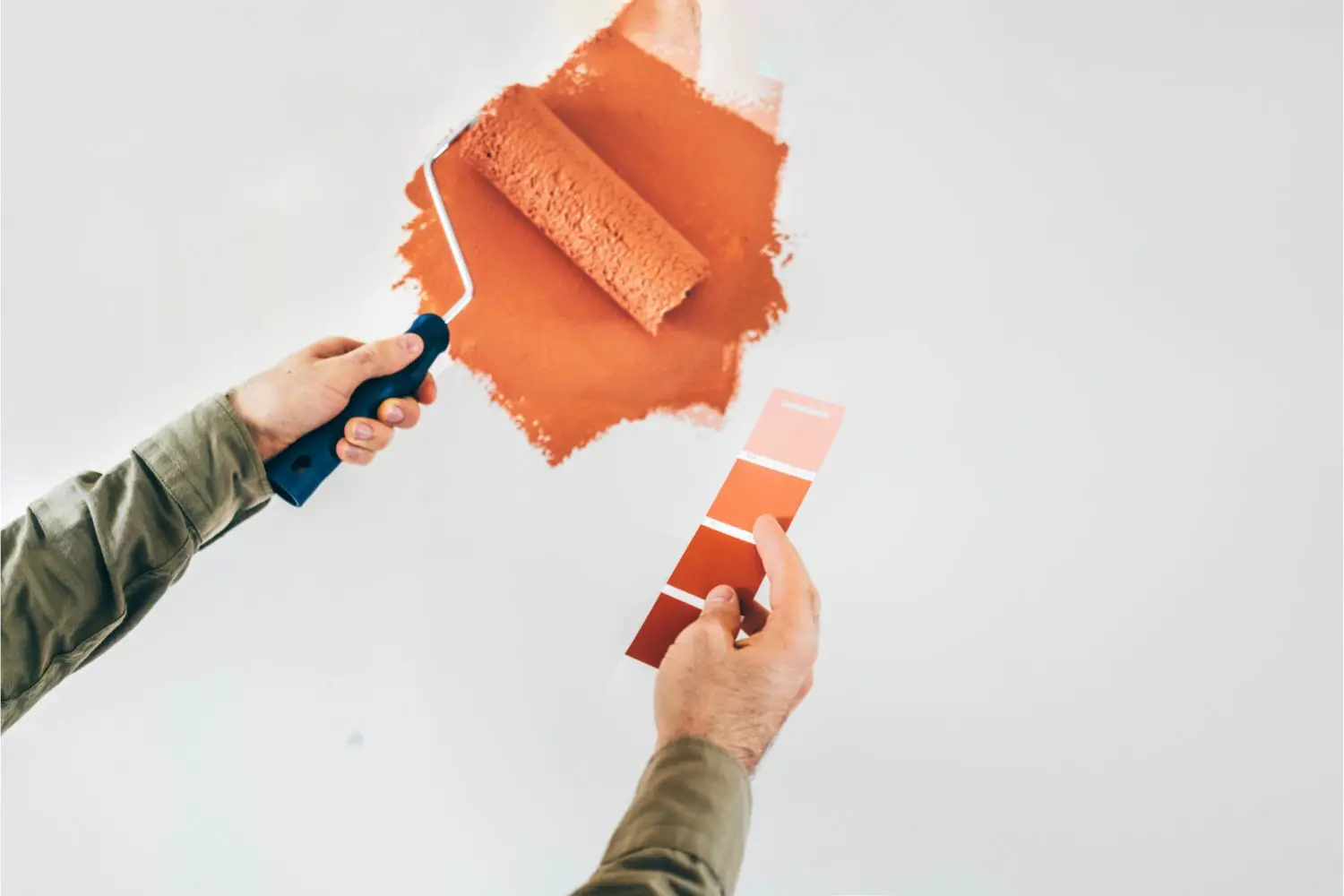
Two popular and commonly used types of paint when it comes to sheen are satin paint and eggshell paint, but what’s the difference between the two? What do they each offer?
To put it simply, eggshell paint has a subtle, small luster to it, while a satin paint will give you a soft glow and velvet-like sheen. With that being said, the two also differ in various other ways, like their durability and easiness to work with.
In our handy guide below, we’re going to explain all of the differences between satin paint and eggshell paint, comparing the two on a number of key factors.
With each one, we’ll also look at what their benefits and drawbacks are. By the end, you’ll be able to make an informed choice of which paint will be optimal for your project, and you’ll get great results!
What Is Satin Paint’s Finish?
When we talk about the “finish” of a paint, we’re referring to the amount of light that the paint will reflect off its surface.
When it comes to the finish of satin paint, you’ll notice that it has a soft and velvet-like shine coming off it, but it isn’t a massively noticeable, overwhelming shine. Instead, it’s more of a gentle glow.
As a result, this places satin paint’s finish somewhere in the middle of finishes for all paints available. It doesn’t offer the least amount of glow out there, but it’s also far from the dazzling shine of other paints either.
What Are The Characteristics Of Satin Paint?
Not only does satin paint have a soft glow finish to it, but it’s also durable and tough. This is thanks to the high amount of binder used in its creation.
Putting it simply, paints are made up of pigment (the color), binder, vehicle, and some other additions.
The binder is what binds all of the paint’s pigments together in film, which then also helps the paint to adhere to the surfaces you paint it on.
Satin paint has a higher amount of binder in it than some other paints, and as a result it’s a lot tougher. This is really useful, because it means that the paint is going to withstand general wear and tear better, rather than peel and crack.
This means that satin paint is a great pick for painting things that are going to have a lot of contact, with people and things rubbing against it.
On top of that, satin paint is also more resistant to moisture, which also makes it a great choice if your painted surface is going to be subjected to moisture, water, or humidity. For example, you might be painting something by a window that’s opened often.
Even better, satin paint’s high amount of binder makes it easier to clean, too, because its toughness allows it to withstand decent scrubbing and cleaning products without wearing down.
However, the quality sheen of satin paint also brings with it problems. For a start, satin paint costs more than paints with less sheen, such as eggshell paint.
This is because it has more sheen and more binder, so it naturally costs more to make.
On top of that, a higher level of sheen makes flaws and imperfections stick out, with light illuminating flaws in the paint work. As a result, you need to make sure you apply the paint really evenly.
If you’re not careful when painting with satin paint, uneven parts and streaks will easily be highlighted. And if you try to do a touch-up? The improvements won’t blend in as well.
Finally, a higher amount of binder also means a lower amount of pigment, and this affects how easy the paint is to do coverage with.
As a result, you’ll need more coats to get the job done, but then these coats already cost more.
Pros And Cons Of Satin Paint
As you’ve seen, there are plenty of benefits and drawbacks to using satin paint, and some of them even feed into each other.
Pros
- Tough and durable
- Cleaned more easily
- Decent coverage
- Good amount of sheen
- Resistant to moisture
Cons
- Costs more
- Flaws more noticeable
- Touch-ups blend poorly
- Coverage needs more coats
What Is Eggshell Paint’s Finish?
On the other hand, eggshell paint has a finish that’s less noticeable, with a subtle amount of sheen to it. An eggshell painted surface will only reflect a little light, creating a very soft and small glow.
As a result, eggshell paint is somewhere below the middle of the scale when it comes to the sheen of all paints. It offers less of a glow than satin paint, but it also doesn’t offer as staggeringly little sheen as flat paint.
What Are The Characteristics Of Eggshell Paint?
Eggshell paint gets its little amount of sheen thanks to the amount of binder and pigment within its construction.
In its case, there is less binder than higher sheen paints like satin, but more a higher amount of pigment then instead.
Obviously, though, it doesn’t have the least amount of binder out of all paints, because flat paints or matte paints have far less, which is why they reflect even less light and have less sheen.
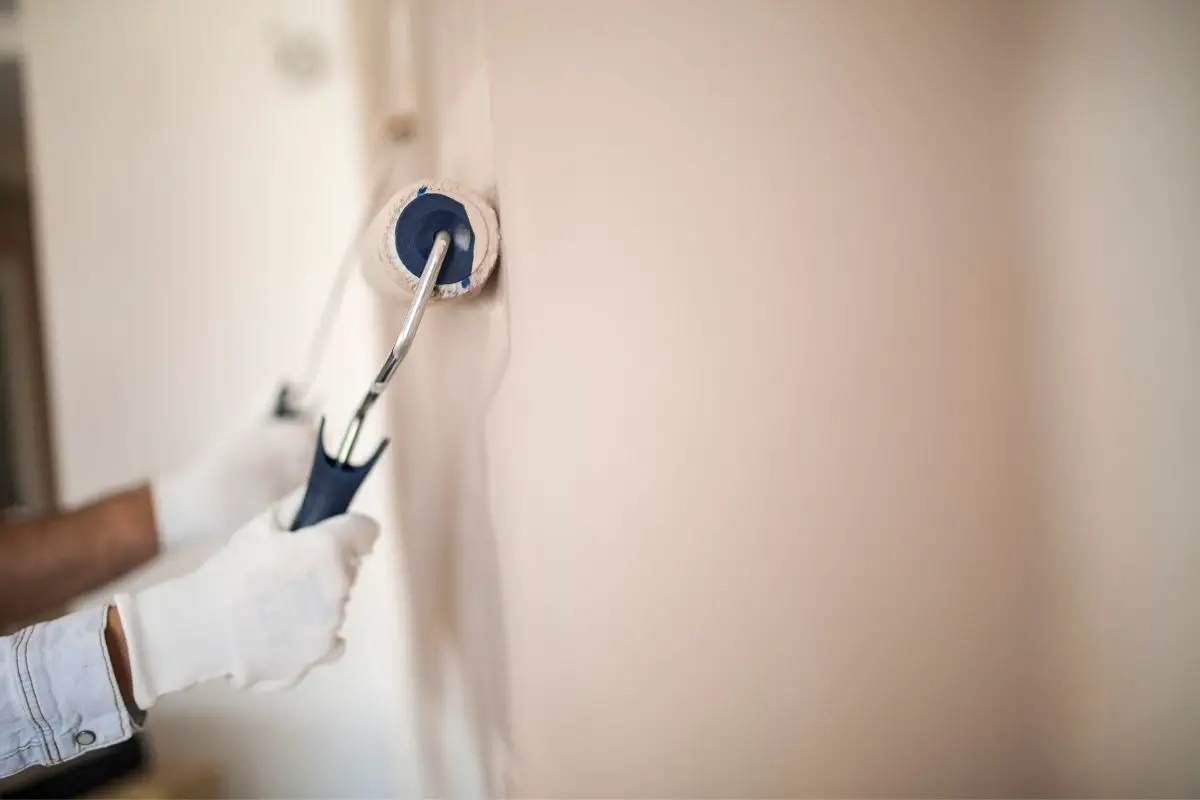
On the plus side, the lower amount of binder in the paint means it’s easier for you to apply it.
This is because uneven spots and streaks will show up a lot less with the paint, because the light will barely illuminate them, and so you don’t need to put as much care into the painting.
Similarly, this means that the paint’s flaws won’t be highlighted as much, and you’ll also be able to do touch-ups and have them blend in a lot better.
Not that you’d need to do many touch-ups anyway, because the flaws were already well hidden!
Eggshell paint also has good coverage to it, with you being able to get more out of each coat.
This helps to save you money, because you won’t have to buy more cans. However, the paint is on the cheaper side anyway!
Since it contains less binder, it’s less expensive to produce, and so you can get it more cheaply than higher-binder paints such as satin.
You might think that the cheapness and lesser amount of sheen would make the paint unattractive, but this actually isn’t the case.
The subtle level of sheen actually helps to make the paint look quite interesting, offering more dynamism and depth than if the paint was flatter, but at the same time not overwhelming with dazzling light and sheen.
However, there are also downsides to using eggshell paint. A key one is the fact that the lower amount of binder means that the paint is less tough and durable.
This means that it’s more susceptible to damage, whether that’s from it being brushed against a lot or even the surface being cleaned.
Just scrubbing the paint could damage it, which makes cleaning very difficult. However, it’s at least not the least-durable paint, because ones with lower amounts of binder exist.
Similarly, eggshell paint is also not very moisture-resistant. This means that it’s a poor choice of paint to use on surfaces that will be subjected regularly to moisture, water, or humidity.
Pros And Cons Of Eggshell Paint
Just like with satin paint, you’ve seen that there are pros and cons to using eggshell paint, and a lot of them are inverses of the benefits and drawbacks for using satin paint!
Pros
- Easier application
- Flaws highlighted less
- Touch-ups blend well
- Great coverage
- Cheaper than higher-binder paints
Cons
- Less tough and durable
- Poor moisture-resistance
- Cleaning could damage it
What Should You Use Each Paint For?
Now that we’ve looked at the characteristics of satin paint and eggshell paint, along with the benefits and drawbacks of using each, it’s worth looking at what you should actually use each one for.
Satin Paint Usage
Satin paint has lots of uses, making it a fantastic pick for a lot of paint jobs. This is thanks to its great characteristics that we outlined earlier.
For example, its toughness and durability makes it a good pick for busy homes, because it’ll be able to put up with lots of contact. This makes it great for high-traffic rooms like children’s bedrooms, living rooms, kitchens, and more.
Additionally, its moisture resistance makes it a good choice for areas that are going to encounter a decent amount of moisture and humidity.
Where satin paint isn’t a good choice, though, is for special showcase surfaces.
Since the paint is poor at disguising its imperfections, unevenness, and flaws, due to its sheen highlighting them, then you don’t want to use it on walls that are going to be scrutinized.
On top of that, satin paint is poor for painting ceilings. This is again because of its higher amount of sheen, because it means that light will reflect off it well, causing the ceiling to glow.
Since a ceiling is always above us, and always in our vision, a glowing ceiling will grow tiresome.
Eggshell Paint Usage
On the other hand, eggshell paint doesn’t have the versatility of satin paint, but it does excel over it in some areas.
For one, it actually is a good case for showcasing surfaces, because the lower amount of binder means that it has less sheen. With less sheen, flaws and imperfections in the paint job are kept hidden. Similarly, touch-ups will blend in well.
On top of that, eggshell is a good choice for ceilings. Since it has a lower amount of sheen, offering only a subtle glow, then it doesn’t make the ceiling distracting and annoying. It;s an especially good pick for dark rooms, because the ceiling will reflect light poorly.
However, the lower amount of binder in eggshell paint means that it’s a lot less durable and tough than something like satin paint.
This means that eggshell is a poor choice for painting areas that will get a lot of contact. So, if you paint children’s bedrooms or living rooms with eggshell, then the repeated contact against the wall will cause it to slowly degrade and peel.
Additionally, eggshell paint’s poor resistant to moisture makes it a bad choice for surfaces that are in humid or moisture-heavy areas.
What’s The Difference Between Satin Paint And Eggshell Paint?

Now that we’ve looked at both satin paint and eggshell paint in some depth, it’s time to compare them on a number of key areas so that you can better work out which is going to be most appropriate for your painting project.
We’ve got the comparison summarized in a small table to begin with, so you can see a brief overview, but then we go in-depth on each of the comparisons just below.
| Factor | Eggshell Paint | Satin Paint |
|---|---|---|
| Sheen & Appearance | Offer strong color, but has very little sheen to it. | Offers strong color and has a slight sheen to it. |
| Ease Of Application | Quite easy to apply, and touch-ups blend very well. | Sheen makes flaws, uneven spots, and touch-ups stand out. More difficult to apply. |
| Coverage Quality | Great amount of coverage, you get lots per coat. | Reasonable amount of coverage. |
| Durability | Since it contains less binder, it’s less durable, and so it is more susceptible to wear and tear. | Since it contains a decent amount of binder, it’s durable. This means that it’s good for popular, contact-heavy areas. |
| Cleaning | Since it’s less durable and tough, it doesn’t withstand cleaning as well. Cleaning can wear it down, but touch-ups can recover it. | Since it’s durable and tough, cleaning shouldn’t mark your paint job. |
| Finish & Luster | Has a gentle, very soft luster. | Has a soft glow and a velvet-like luster. |
| Price | The reduced amount of binder means it costs less to make, so it costs less to buy too. Affordable. | Since it contains more binder, it’s a more expensive paint than eggshell. Moderately priced. |
Sheen & Appearance
Satin paint and eggshell paint have very different appearances, though both offer strong color.
However, when it comes to sheen, satin paint has a far more noticeable, velvet-like one, while eggshell paint is much subtler.
This is all to do with the amount of binder in each paint. Since satin paint contains more binder, it has a lot more sheen and shine, and light reflects off it more.
This means that eggshell paint is going to reflect very little light, but this makes it a great choice for ceilings and darker rooms.
On top of that, the lack of sheen means that the paint’s color is more authentic, because people are able to see its proper shade rather than have it be altered by light.
On the other hand, satin paint is going to have a color that’s heavily affected by the impressive amount of light that reflects off it.
With a higher amount of sheen and glow, the colors of the paint will be altered by the light. On top of that, the shininess gives the paint a greater depth, which makes it more visually appealing.
Ease Of Application
Interesting, the different amounts of sheen influence how difficult each paint is to apply. This is because a higher sheen actually highlights imperfections in the paint job.
As a result, satin paint is a lot harder to apply, because you need to be more careful. If you’re not, then flaws and uneven spots in the painting will show up more, thanks to the increased sheen and reflection.
It also highlights lines of painting, so you need to be careful to blend more. Additionally, touch-ups will blend poorly, sticking out.
On the other hand, eggshell paint is far easier to apply, because the low level of sheen won’t make imperfections visible.
This means that you can paint how you want, including with a W technique, and flaws or uneven spots won’t be clear. Additionally, you’ll be able to make touch-ups that blend naturally with the original paint.
Coverage Quality
When it comes to coverage, both offer a good amount, but eggshell is slightly better.
This is because it has a lower amount of binder in it, and then more pigment, which allows you to get a lot more out of each coat of paint.
Satin paint won’t give quite as much coverage, but you may be able to find a tin that advertises “1 coat” coverage.
Durability
However, satin paint is far better when it comes to toughness and durability.
Since eggshell has less binder in it, it means the paint isn’t as good at withstanding heavy-contact and wear.
This means that the paint is likely to get chipped or scratched, and it also has poor resistance to water.
As a result, keep it away from moisture-heavy areas. On the plus side, touch-ups blend so well that you can fix any scuffs.
On the other hand, satin paint is very durable, thanks to its higher amount of binder.
This means that it’s a great pick for locations with lots of contact, because people repeatedly brushing against it should fail to damage it too much.
Additionally, it’s got better moisture-resistance, so it’s great for humid areas, and it could even reject mold. If it does get damaged, though, touch-ups won’t be so easy.
Cleaning
Cleaning is all about durability, and so eggshell paint fares a lot worse during cleaning than satin paint does.
Since eggshell is less tough, it’s more likely to get scuffed when you’re cleaning it. However, its touch-ups blend better, so it’s easy to fix those marks.
On the other hand, satin paint (see also “Difference Between Satin And Flat Paint“) is very durable, and so you’ll be able to clean it thoroughly without worrying about ruining it .
Finish & Luster
With both paints, you can get a smooth finish, but satin paint will have a subtle, slight amount more gloss.
Eggshell’s luster will be soft, while satin paint will be velvet-like. With that being said, satin’s finish isn’t going to be quite as even as eggshell, because its sheen highlights its unevenness.
Price
Finally, you’ll find that eggshell paint is cheaper than satin paint. This is because satin contains more binder, and as a result it’s more expensive to make, so you pay for the improved sheen and hardiness.
However, satin paint isn’t a huge amount more costly, so you can still easily spend the extra money if you’re only using it for a small project.
Are You Able To Paint Satin On Top of Eggshell?
If you’ve already used eggshell paint, but you then want to go over it with satin paint in order to give it more sheen, then you can. However, their bases need to be the same or compatible.
This means that if you’re using a water-based eggshell and a water-based satin, then they’ll easily work together.
However, an oil-based eggshell is not going to work well with a water-based satin, although the reverse may work better over one another.
You can buy water-based and oil-based eggshell and satin paints.
Can Satin Paint And Eggshell Paint Mix?
On the other hand, you might want to combine the two paints outright.
Thankfully, you can! Since the paints aren’t too drastically different in their sheen, they can blend easily, and will give you a sheen somewhere in between. Simply mix the paints very thoroughly.
How Does Semi-Gloss Paint Differ?
While eggshell and satin pint are close in their sheen, the next level up on the scale is semi-gloss.
This means that semi-gloss contains more binder than satin, and certainly more than eggshell.
Naturally, it therefore is more durable and moisture-resistant than the two, but also more prone to highlighting flaws and uneven spots. On top of that, it’s very shiny, so it won’t suit all surfaces.
How Does Flat Paint Differ?
On the other hand, flat paint is the other end of the scale, offering almost no sheen. This is good and bad! On the plus side, it means that it’s easy to apply, since it won’t show any imperfections.
On the negative side, the minimal amount of binder means the paint has little durability, and so it’ll be easily damaged from contact and cleaning.
Final Thoughts
Eggshell paint and satin paint each have their own benefits and drawbacks, making them suitable for very different jobs. To find the best paint for your job, simply study our table of characteristics!
- How To Sew Fabrics Together - June 5, 2023
- How Many Stitches Per Inch? - June 5, 2023
- How Long Does It Take To Sew A Dress? - June 5, 2023



